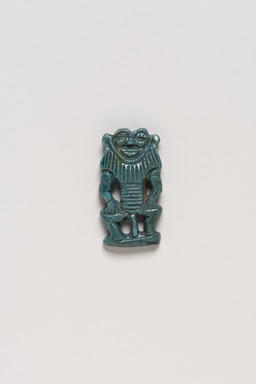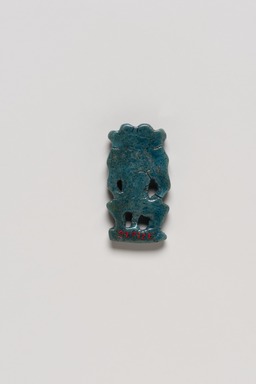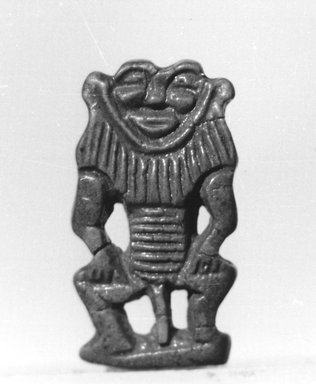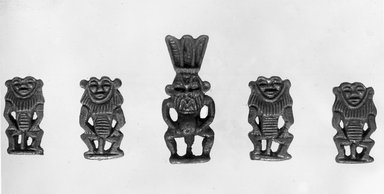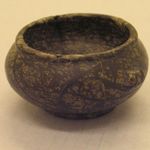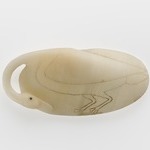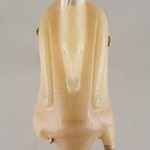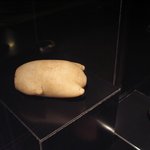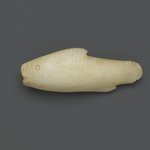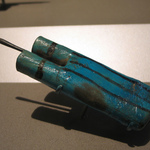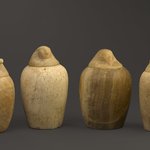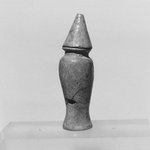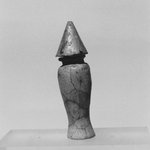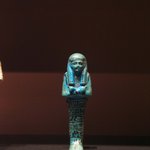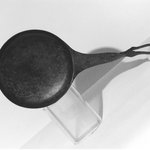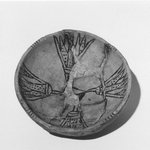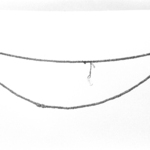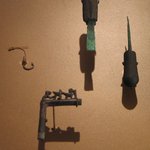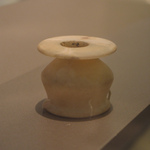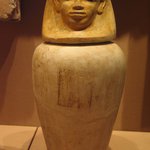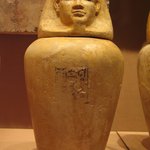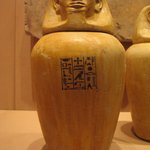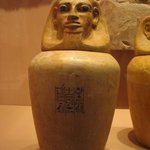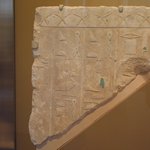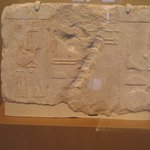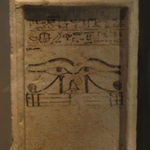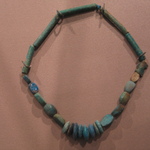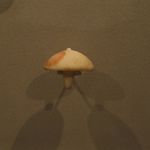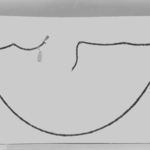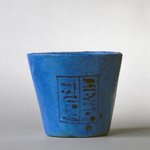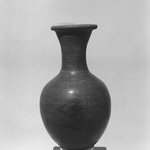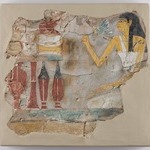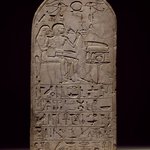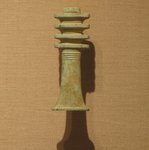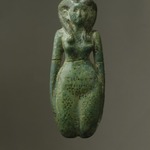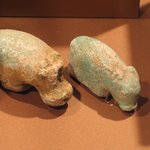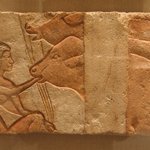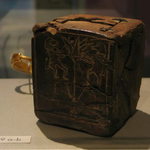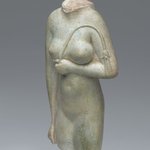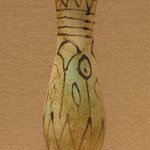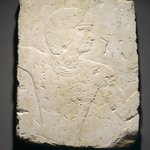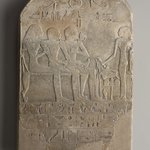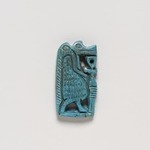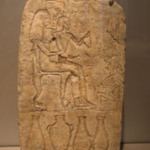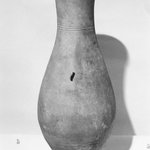Male Birth-God
Egyptian, Classical, Ancient Near Eastern Art
On View: Egyptian Orientation Gallery, 3rd Floor
The Birth-God
Over time, the image of the Egyptian birth-god underwent an evolution.
During the Middle Kingdom and at the beginning of the Eighteenth Dynasty, the male birth-god appeared as a lion-man: a human man with a feline mane and tail. Around the middle of the dynasty, the Egyptians sought to combat an increase in infant mortality with a new amuletic form. Beginning with Amunhotep II (circa 1426–1400 B.C.E.), the birth-god’s body assumed the characteristics of a dwarf with short, thick limbs, sunken chest, and fleshy buttocks. Because dwarfs rarely survived infancy in antiquity, one who did was considered magical. By combining the attributes of these “charmed” dwarfs with the ancient lion-man, craftsmen produced a new, more powerful protector of women and children.
MEDIUM
Faience
DATES
ca. 1539–1425 B.C.E.
DYNASTY
early Dynasty 18 to middle Dynasty 18
PERIOD
New Kingdom
DIMENSIONS
1 1/4 x 11/16 x 3/16 in. (3.1 x 1.7 x 0.5 cm)
(show scale)
ACCESSION NUMBER
37.912E
CREDIT LINE
Charles Edwin Wilbour Fund
CATALOGUE DESCRIPTION
Dark blue-green glazed amulet representing, in relief (the rear surface is flat), the god Bes standing on a small plinth with his hands at his hips. The arms and legs are openwork. The outer edge of the top of the figure is formed by the line of the curved brows. The details of the beard and fur on the abdomen are given by incised lines. The figure is pierced for suspension from side to side. Pendant breasts are not indicated. Condition: Small cracks in beard and right wrist
CAPTION
Male Birth-God, ca. 1539–1425 B.C.E. Faience, 1 1/4 x 11/16 x 3/16 in. (3.1 x 1.7 x 0.5 cm). Brooklyn Museum, Charles Edwin Wilbour Fund, 37.912E. Creative Commons-BY (Photo: Brooklyn Museum, 37.912E_top_PS20.jpg)
IMAGE
top, 37.912E_top_PS20.jpg. Brooklyn Museum photograph, 2022
"CUR" at the beginning of an image file name means that the image was created by a curatorial staff member. These study images may be digital point-and-shoot photographs, when we don\'t yet have high-quality studio photography, or they may be scans of older negatives, slides, or photographic prints, providing historical documentation of the object.
RIGHTS STATEMENT
Creative Commons-BY
You may download and use Brooklyn Museum images of this three-dimensional work in accordance with a
Creative Commons license. Fair use, as understood under the United States Copyright Act, may also apply.
Please include caption information from this page and credit the Brooklyn Museum. If you need a high resolution file, please fill out our online
application form (charges apply).
For further information about copyright, we recommend resources at the
United States Library of Congress,
Cornell University,
Copyright and Cultural Institutions: Guidelines for U.S. Libraries, Archives, and Museums, and
Copyright Watch.
For more information about the Museum's rights project, including how rights types are assigned, please see our
blog posts on copyright.
If you have any information regarding this work and rights to it, please contact
copyright@brooklynmuseum.org.
RECORD COMPLETENESS
Not every record you will find here is complete. More information is available for some works than for others, and some entries have been updated more recently. Records are frequently reviewed and revised, and
we welcome any additional information you might have.
